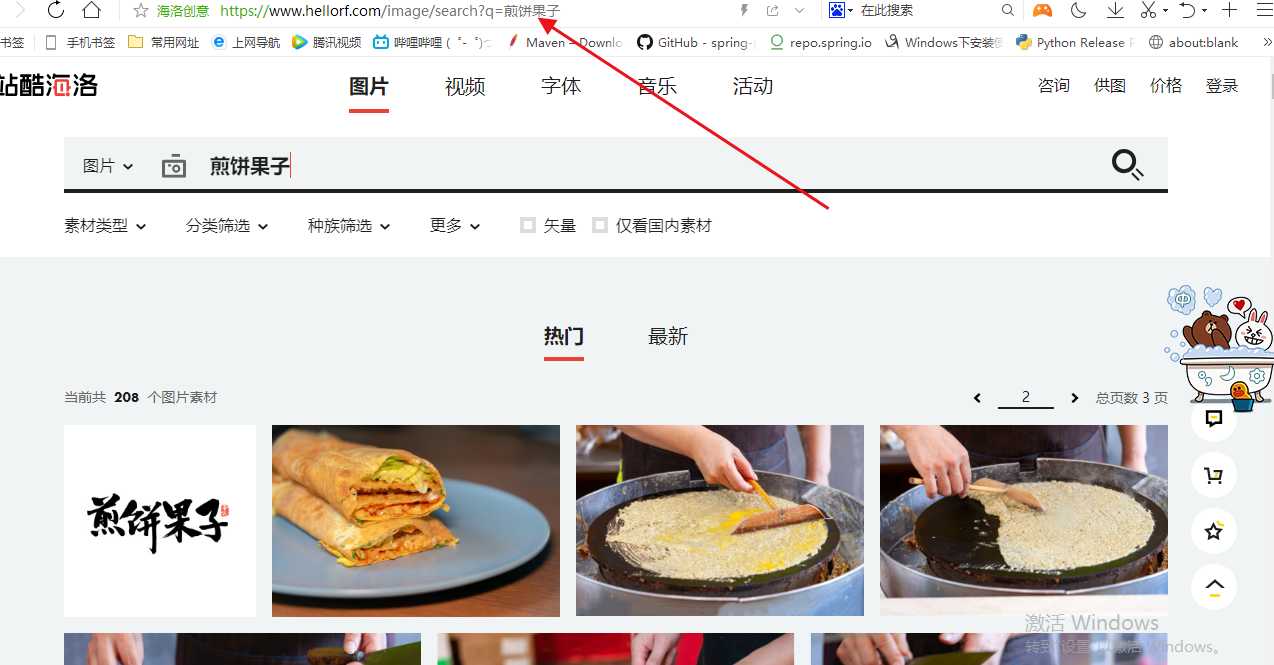一、Jsoup概述
jsoup 是一款Java 的HTML解析器,可直接解析某个URL地址、HTML文本内容。它提供了一套非常省力的API,可通过DOM,CSS以及类似于jQuery的操作方法来取出和操作数据。
主要功能:
1. 从一个URL,文件或字符串中解析HTML;
2. 使用DOM或CSS选择器来查找、取出数据;
3. 可操作HTML元素、属性、文本;
二、jsoup爬取图片
以 https://www.hellorf.com/image/search 网站为例,根据关键词爬取相关的图片。
项目依赖
<dependency>
<groupId>org.jsoup</groupId>
<artifactId>jsoup</artifactId>
<version>1.10.2</version>
</dependency>
当我们直接在网页中搜索的时候,是可以看见浏览器地址栏上的信息的,我们将 “”https://www.hellorf.com/image/search?q=煎饼果子“”复制到Java代码中去发现要搜索的关键字被压缩编码了。
原因是请求头的编码为gzip
这时要使用一些字节数据将输入的汉字正确处理为编码后的值,这里写了一个gzip的工具类。
public class GzipUtils {
public static void main(String[] args) throws IOException {
String str = "煎饼果子";
byte[] bytes = str.getBytes();
byte[] gzipBytes = gzip(bytes);
byte[] unGzipBytes = unGzip(gzipBytes);
String value = byteToHexString(unGzipBytes);
String finalString = getFinalString(str);
System.out.println(value);
System.out.println(finalString);
}
public static byte[] gzip(byte[] content) throws IOException {
ByteArrayOutputStream baos = new ByteArrayOutputStream();
GZIPOutputStream gos = new GZIPOutputStream(baos);
ByteArrayInputStream bais = new ByteArrayInputStream(content);
byte[] buffer = new byte[1024];
int n;
while ((n = bais.read(buffer)) != -1) {
gos.write(buffer, 0, n);
}
gos.flush();
gos.close();
return baos.toByteArray();
}
public static byte[] unGzip(byte[] content) throws IOException {
ByteArrayOutputStream baos = new ByteArrayOutputStream();
GZIPInputStream gis = new GZIPInputStream(new ByteArrayInputStream(content));
byte[] buffer = new byte[1024];
int n;
while ((n = gis.read(buffer)) != -1) {
baos.write(buffer, 0, n);
}
return baos.toByteArray();
}
public static String byteToHexString(byte[] bytes) {
StringBuffer sb = new StringBuffer(bytes.length);
String sTemp;
for (int i = 0; i < bytes.length; i++) {
sTemp = Integer.toHexString(0xFF & bytes[i]);
if (sTemp.length() < 2)
sb.append(0);
sb.append(sTemp.toUpperCase());
}
return sb.toString();
}
public static String getFinalString(String str) throws IOException {
//1.转字节数组
byte[] bytes = str.getBytes();
//2.压缩字节数组
byte[] gzip = gzip(bytes);
//3.将压缩的字节数组再解压
byte[] unGzip = unGzip(gzip);
//4.将解压的字节数组转为字符串
String value = byteToHexString(unGzip);
StringBuilder stringBuilder = new StringBuilder();
stringBuilder.append("%");
int count = 0; // %E5%A4%A7%E9%97%B8%E8%9F%B9
for (int i = 0;i < value.length();i++){
count++;
if (count == 3){
count = 1;
stringBuilder.append("%");
}
char charStr = value.charAt(i);
stringBuilder.append(charStr);
}
return stringBuilder.toString();
}
}
运行main方法后查看控制台
这样就和编码后的数据一致了。
爬虫代码编写
public class HtmlParseUtils {
public static void main(String[] args) throws IOException {
String str = "煎饼果子";
String finalString = GzipUtils.getFinalString(str);
List<String> list = parseImg(finalString);
for (String s : list) {
System.out.println(s);
}
}
public static List<String> parseImg(String keywords) throws IOException {
ArrayList<String> images = new ArrayList<>();
String url = "https://www.hellorf.com/image/search?q=" + keywords;
Document document = Jsoup.parse(new URL(url),9999);
//Elements img = document.getElementsByTag("img");
List<Element> elements = document.getElementsByTag("img").subList(0, 5);
for (Element element : elements) {
String src = element.attr("data-src");
if (src == null || "".equals(src)){
src = element.attr("src");
}
images.add(src);
}
return images;
}
}
控制台查看结果:
版权声明:本文内容由互联网用户自发贡献,该文观点仅代表作者本人。本站仅提供信息存储空间服务,不拥有所有权,不承担相关法律责任。如发现本站有涉嫌侵权/违法违规的内容, 请发送邮件至 举报,一经查实,本站将立刻删除。
如需转载请保留出处:https://bianchenghao.cn/38667.html






